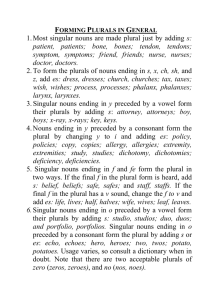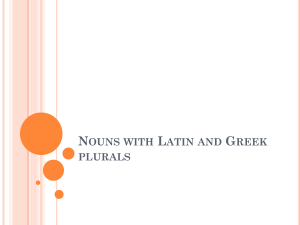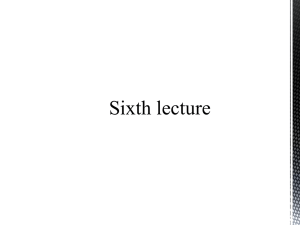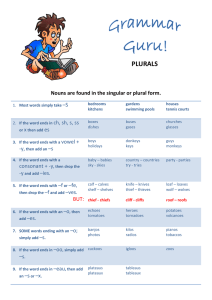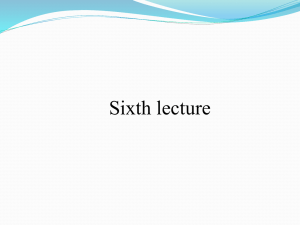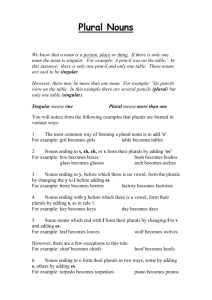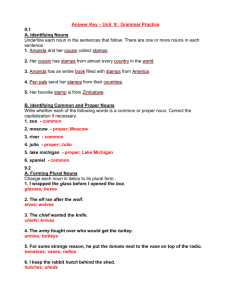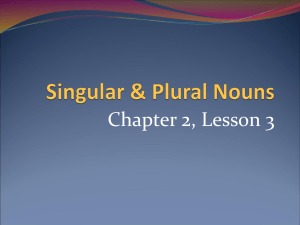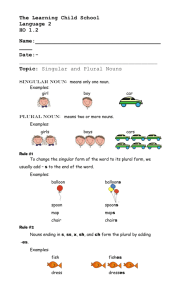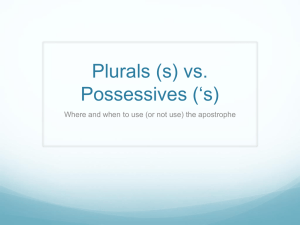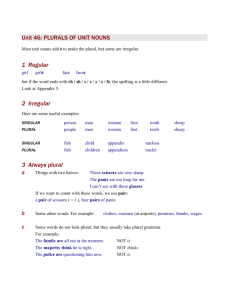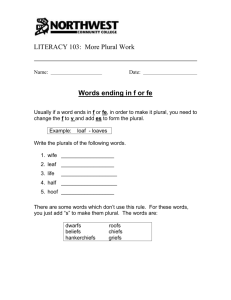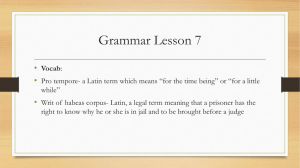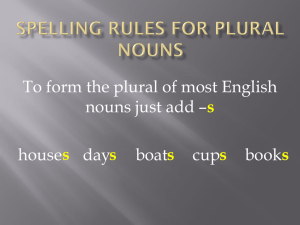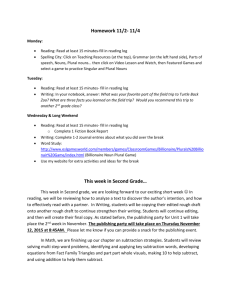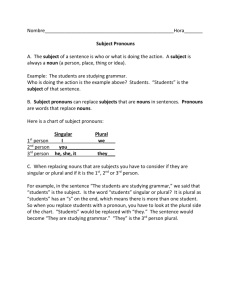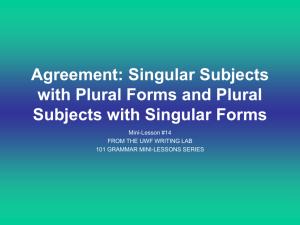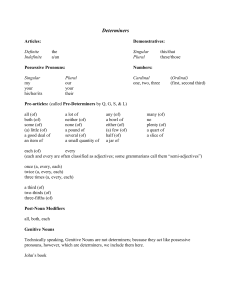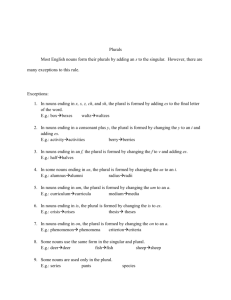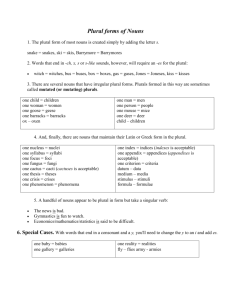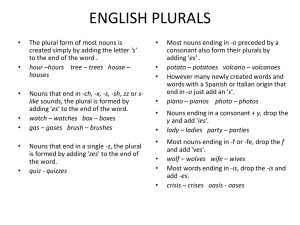PRONUNCIATION RULES
advertisement
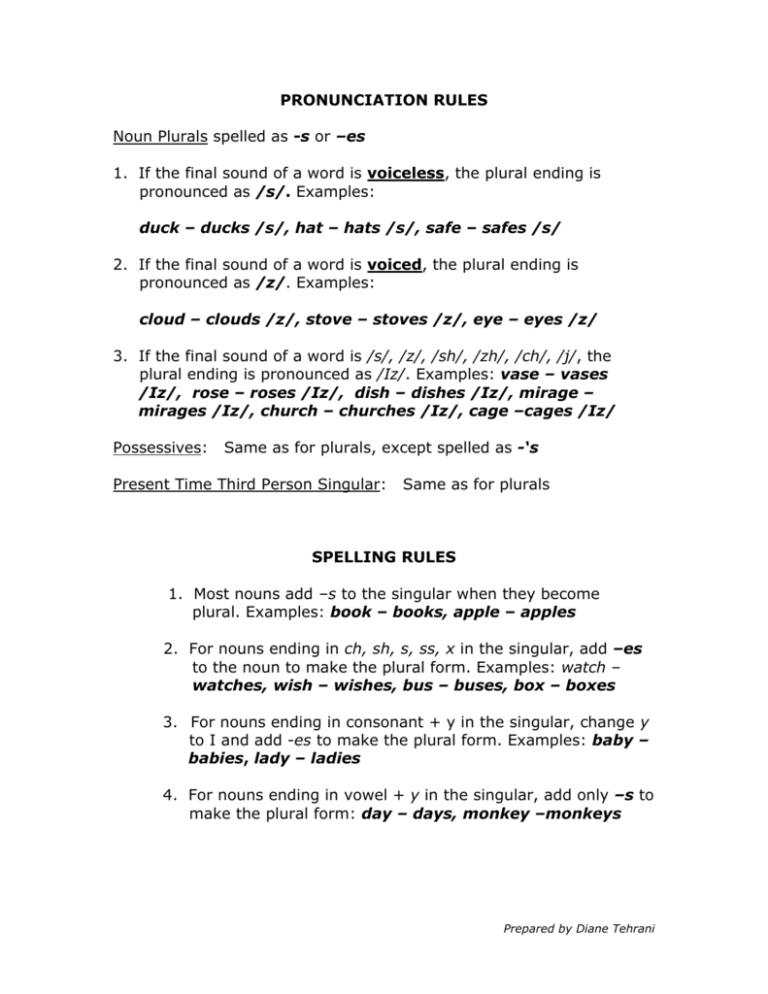
PRONUNCIATION RULES Noun Plurals spelled as -s or –es 1. If the final sound of a word is voiceless, the plural ending is pronounced as /s/. Examples: duck – ducks /s/, hat – hats /s/, safe – safes /s/ 2. If the final sound of a word is voiced, the plural ending is pronounced as /z/. Examples: cloud – clouds /z/, stove – stoves /z/, eye – eyes /z/ 3. If the final sound of a word is /s/, /z/, /sh/, /zh/, /ch/, /j/, the plural ending is pronounced as /Iz/. Examples: vase – vases /Iz/, rose – roses /Iz/, dish – dishes /Iz/, mirage – mirages /Iz/, church – churches /Iz/, cage –cages /Iz/ Possessives: Same as for plurals, except spelled as -‘s Present Time Third Person Singular: Same as for plurals SPELLING RULES 1. Most nouns add –s to the singular when they become plural. Examples: book – books, apple – apples 2. For nouns ending in ch, sh, s, ss, x in the singular, add –es to the noun to make the plural form. Examples: watch – watches, wish – wishes, bus – buses, box – boxes 3. For nouns ending in consonant + y in the singular, change y to I and add -es to make the plural form. Examples: baby – babies, lady – ladies 4. For nouns ending in vowel + y in the singular, add only –s to make the plural form: day – days, monkey –monkeys Prepared by Diane Tehrani
